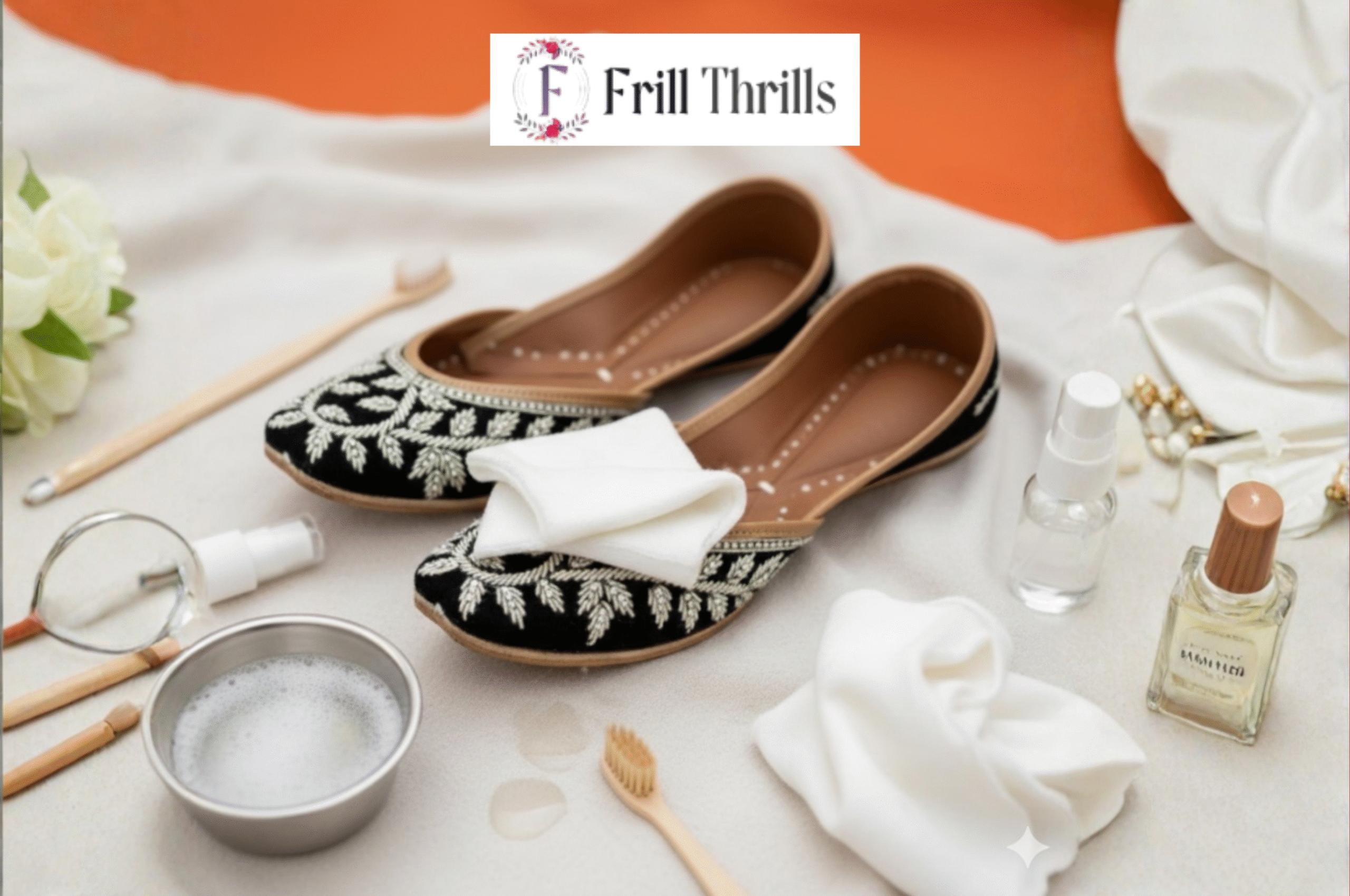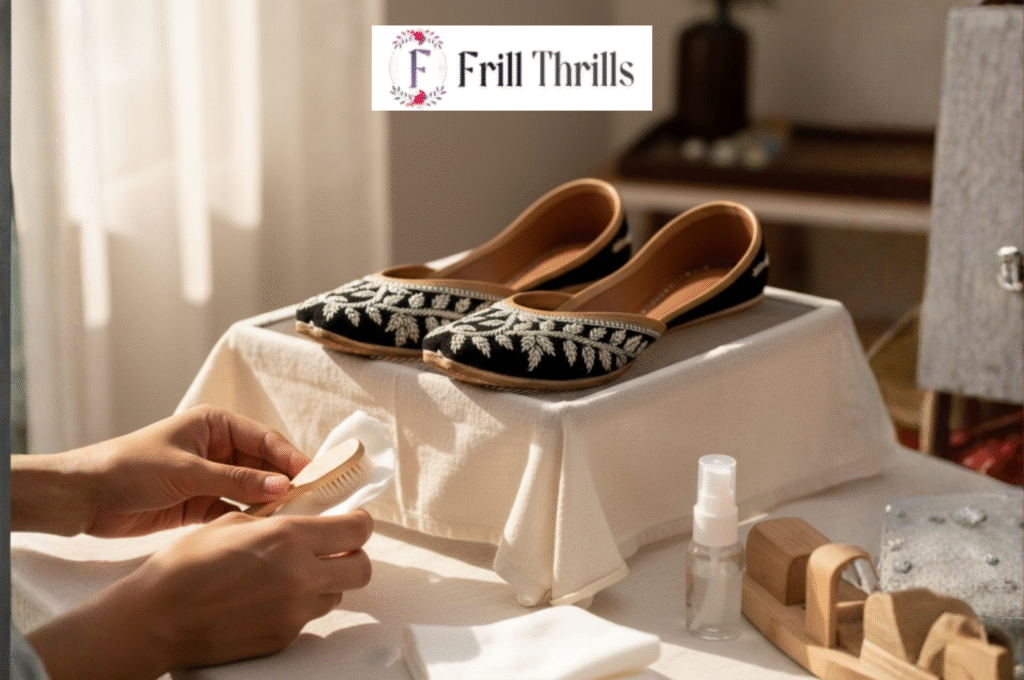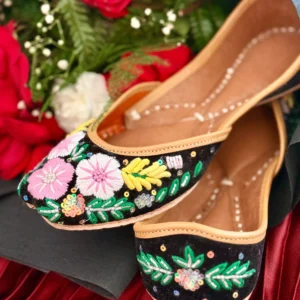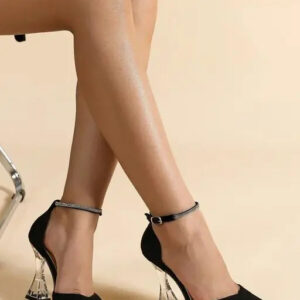
Punjabi Juttis are more than just shoes; they are a vibrant testament to rich cultural heritage and artisanal skill. These exquisite, handcrafted leather shoes, often adorned with intricate embroidery, mirror work, and zardozi, have been a staple of South Asian fashion for centuries. Each pair tells a story, a narrative woven into its elaborate patterns. Their unique charm lies in their blend of comfort, durability, and undeniable aesthetic appeal. They are an indispensable accoutrement for traditional attire, yet they increasingly find their place in contemporary wardrobes, adding a touch of ethnicity to modern ensembles.
Why Home Cleaning Matters
While juttis are built to last, their delicate embellishments and premium materials necessitate proper care. Regular wear can expose them to dirt, dust, and grime, diminishing their lustrous appearance. Professional cleaning can be costly and isn’t always convenient. Learning how to clean Punjabi jutti at home empowers you to maintain their pristine condition, preserving their beauty and extending their lifespan. A well-cared-for punjabi jutti reflects a discerning owner. It’s a small effort for a significant return in longevity and visual appeal.
Understanding Your Jutti: Materials and Care
1. Common Jutti Embellishments
Before commencing any cleaning regimen, it is paramount to understand the specific embellishments on your Punjabi jutti. Many feature delicate silk thread embroidery, often in vibrant, saturated hues. Others showcase shimmering sequins, intricate dabka work, or tiny glass mirrors, known as sheesha. Some might even incorporate semi-precious beads or pearls. Each of these decorative elements requires a nuanced approach to cleaning to prevent damage or discoloration. Harsh chemicals are often anathema to such artistry. A careful inspection will inform your cleaning strategy, ensuring preservation.
2. Identifying Fabric and Leather Components
Beyond the embellishments, juttis are typically crafted from fine leather, both for the sole and the upper, though some modern variations might use synthetic leathers or even textile uppers. The internal lining is usually soft leather or fabric. Distinguishing between genuine leather, faux leather, and various textile components (like silk, velvet, or cotton) is crucial. Leather responds best to specialized leather cleaners or mild soap solutions, while fabric areas might require a different, often gentler, approach. This delineation is critical for effective and safe cleaning. Different materials demand different ablutionary methods.
The Gentle Cleanse: Step-by-Step Guide
1. Initial Dusting and Debris Removal
The first step in any jutti cleaning endeavor is the meticulous removal of loose dust and superficial debris. A soft-bristled brush, such as an old toothbrush or a dedicated shoe brush, is ideal for gently sweeping away accumulated particles from the intricate embroidery and crevices. For more delicate embellishments like zardozi or mirror work, a cotton swab or a very soft, dry cloth can be used with extreme care. This initial detersive action prevents abrasive particles from scratching the surfaces during subsequent cleaning stages. Patience is a virtue here.
2. Targeted Spot Treatment Techniques
For stubborn stains or localized grime, targeted spot treatment is often the most efficacious method. For leather sections, a tiny amount of mild, pH-neutral soap mixed with distilled water can be applied using a damp (not wet) cloth. Gently blot, do not rub, the affected area. For embroidered fabric areas, a solution of mild detergent or a specialized fabric cleaner (always patch test first!) can be carefully dabbed with a cotton swab. Immediately blot dry with a clean, absorbent cloth. Never saturate the punjabi jutti. Avoid vigorous scrubbing, which can dislodge embellishments or fray threads. This precise application prevents broader despoliation.
Drying and Finishing: The Final Touches

1. Proper Drying to Prevent Damage
After cleaning, proper drying is imperative to prevent mildew, water stains, or warping of the leather. Never expose juttis to direct sunlight or artificial heat sources like hairdryers, as this can cause the leather to crack or the colors to fade. Instead, allow them to air dry naturally in a cool, well-ventilated area, away from direct light. Stuffing the juttis with acid-free tissue paper or crumpled newspaper (change frequently) can help maintain their shape and absorb residual moisture. This method ensures the material retains its structural integrity and aesthetic quality.
2. Conditioning and Storage for Longevity
Once completely dry, a final touch can significantly enhance their longevity. For leather components, a specialized leather conditioner can be lightly applied to keep the material supple and prevent dryness. For embroidered areas, a very gentle fabric protector spray (again, patch test first!) can offer a layer of defense against future stains. When storing, keep juttis in individual cloth bags to protect them from dust and friction. Avoid stacking them. This thoughtful storage ensures that your cherished Punjabi juttis remain in pristine condition, ready for their next grand appearance. They represent a significant part of your cultural panoply.
Contact Now: +91 62395 20057
-
Sale!

Black Dabka Work Jutti
Original price was: ₹1,499.00.₹899.00Current price is: ₹899.00. Select options This product has multiple variants. The options may be chosen on the product page -
Sale!

Black Multi Floral Jutti
Original price was: ₹1,499.00.₹899.00Current price is: ₹899.00. Select options This product has multiple variants. The options may be chosen on the product page -
Sale!

Black Punjabi Juttis & Mojaris
Original price was: ₹930.00.₹399.00Current price is: ₹399.00. Select options This product has multiple variants. The options may be chosen on the product page -

Black Rhinestone Pumps for Women and Girls
₹649.00 Select options This product has multiple variants. The options may be chosen on the product page
